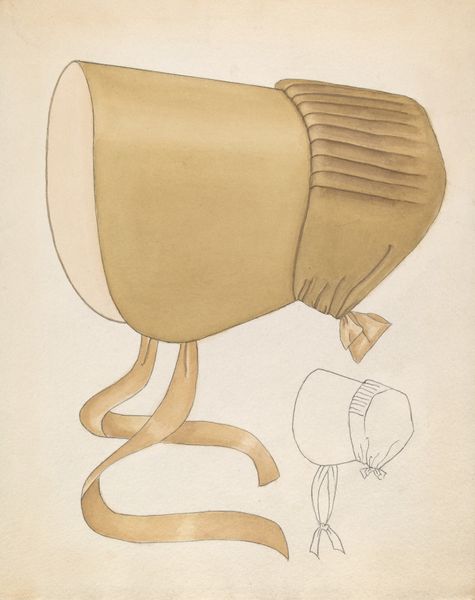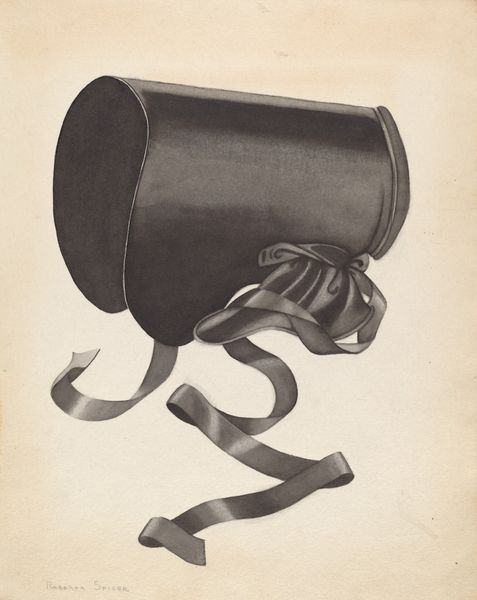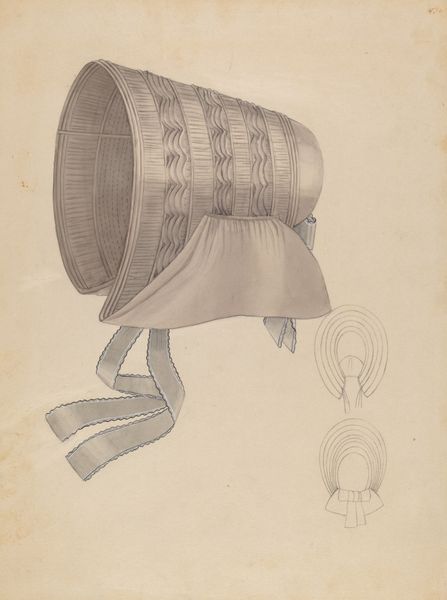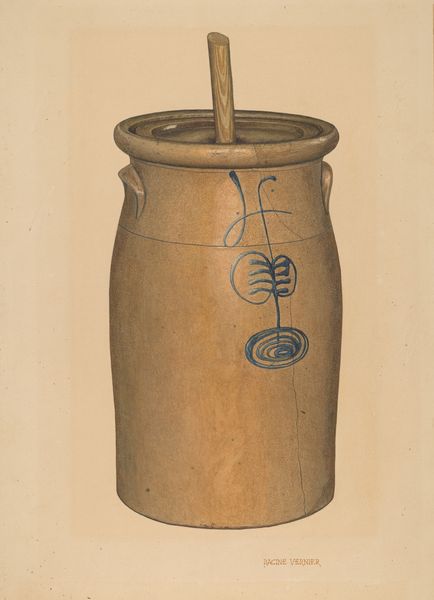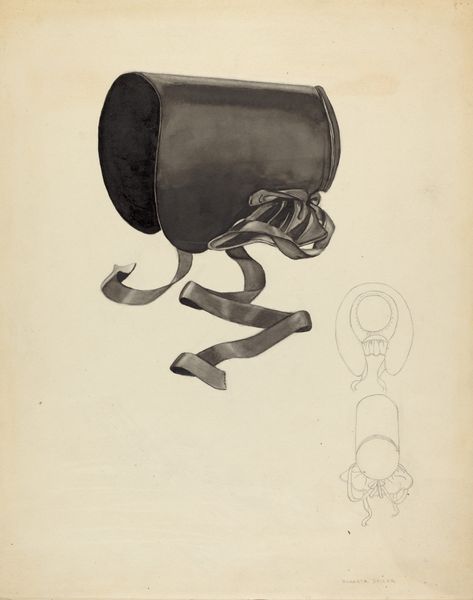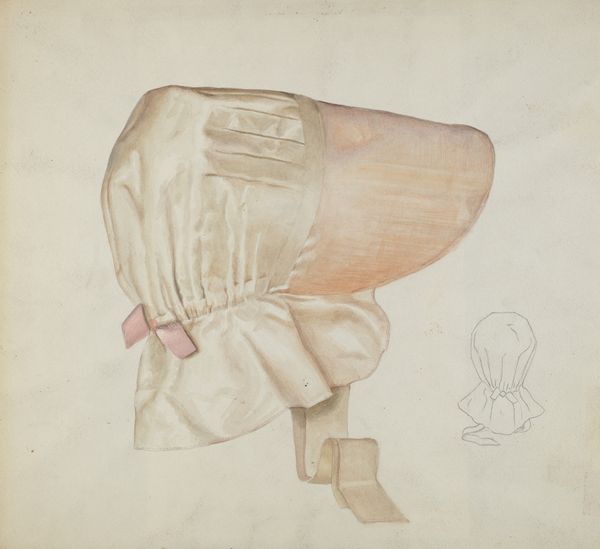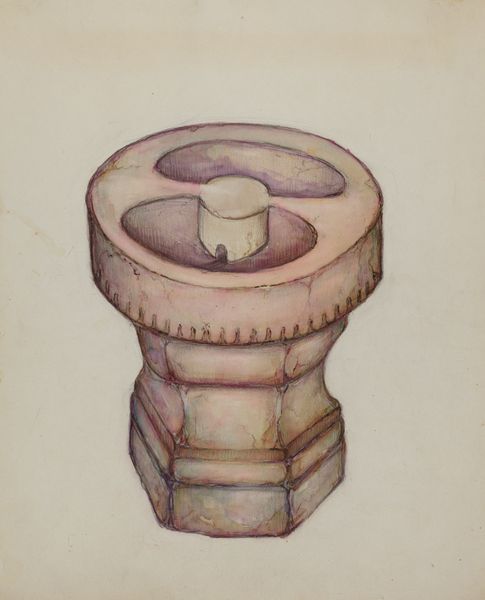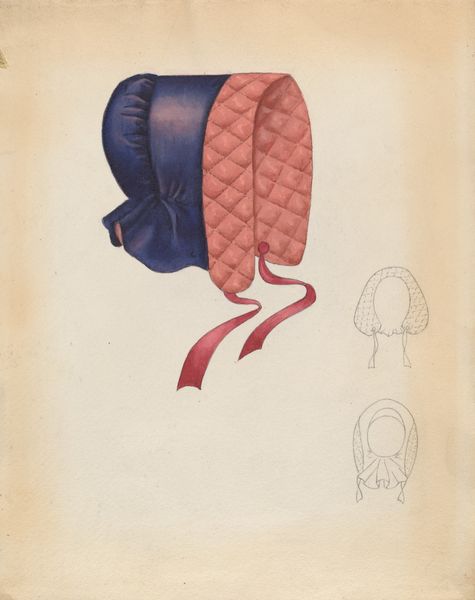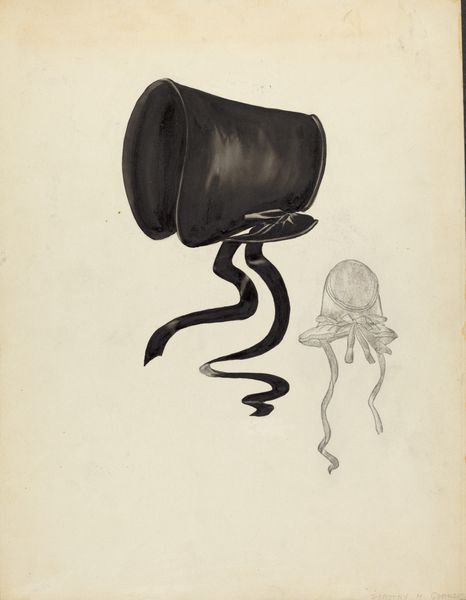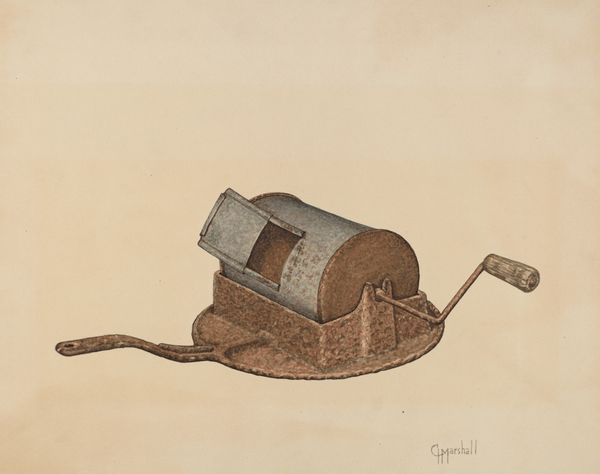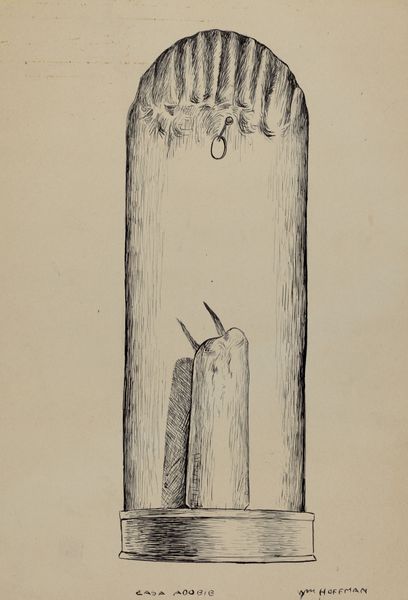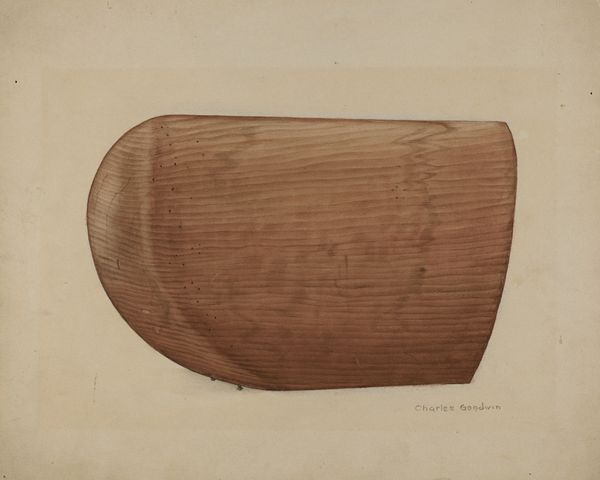
drawing, watercolor
#
drawing
#
caricature
#
watercolor
#
watercolour illustration
#
academic-art
Dimensions: overall: 29.3 x 23.2 cm (11 9/16 x 9 1/8 in.)
Copyright: National Gallery of Art: CC0 1.0
Curator: Isn't this Catherine Fowler's "Quaker Bonnet" just serene? Painted around 1937, the watercolour drawing offers this really lovely, quiet dignity. It’s got a ghost image of another bonnet off to the side there, like a memory. Editor: Quiet is definitely the word that springs to mind. There's a simplicity to the object and its depiction, yes, but the bonnet also makes me think of restraint, limitation. The lines are simple, colors muted; an object defined by what it conceals, you know? Curator: Perhaps, but I see tenderness. Look how gently the ribbons drape! And those pleats—so meticulously rendered, almost lovingly. It whispers of home, of hands carefully crafting and preserving tradition. There’s warmth, even if it's a contained warmth. Editor: I concede your point about the detail—the application of watercolor in such precise strokes really does suggest care and deliberation. Consider though, the muted tones and that almost clinical detachment, right? It's an "academic-art" rendering and a presentation, rather than an intimate portrait. The artist focuses our gaze on form and texture in a seemingly impartial manner. Curator: Impartial, or perhaps just deeply respectful? The Quakers, after all, valued simplicity and inner reflection. Maybe Fowler is honouring that quiet strength, the beauty of unadorned faith? Editor: Interesting notion. The spare composition definitely reinforces the minimalist aesthetic that might correlate to spiritual austerity or maybe to artistic distillation. But maybe we need a little biographical information about Fowler for the basis. Otherwise, our emotional reads are, let’s face it, projections? Curator: Precisely. Isn't that the beauty of it? We bring our own stories and see ourselves reflected. This little bonnet becomes a mirror, showing our hopes, our fears, our very understanding of what beauty and faith mean to us. It becomes deeply individual. Editor: I am compelled by your reflections on projection as critical encounter. Indeed, a final analysis will remain contingent as a consequence.
Comments
No comments
Be the first to comment and join the conversation on the ultimate creative platform.
